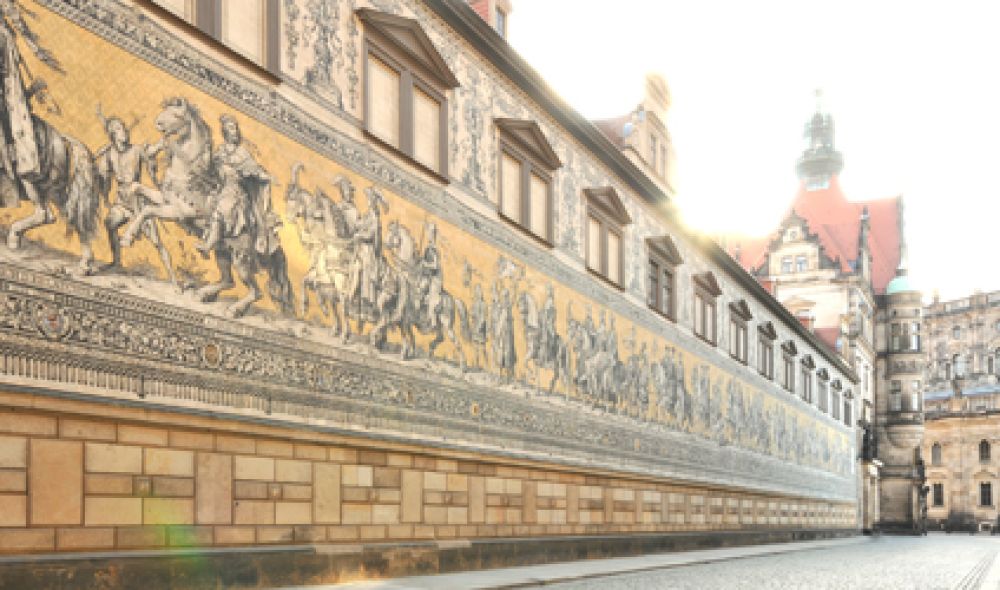

The Fürstenzug, or the Procession of Princes, is a remarkable mural that decorates the outer wall of the Stallhof (Stables Courtyard) of the Dresden Castle in Dresden, Germany. This stunning piece of art is not just a visual spectacle; it is also steeped in history and emblematic of the city's resilience and cultural pride.
The mural was first commissioned to celebrate the 800th anniversary of the Wettin Dynasty, the royal family that once ruled Saxony. Painted between 1871 and 1876, it was originally created with thousands of individual Sgraffito tiles. However, due to the harsh weather, these tiles were replaced with approximately 23,000 Meissen porcelain tiles between 1904 and 1907, making it the largest porcelain artwork in the world. The mural extends for an impressive 102 meters (335 feet), and it showcases the rulers of Saxony from 1127 to 1904.
As a historical landmark, the Fürstenzug has witnessed the turbulent history of Dresden, including the devastating bombing in 1945 during World War II. Remarkably, it survived the bombing with minimal damage, becoming a symbol of hope and regeneration for Dresden's populace.
After the reconstruction of Dresden, the mural emerged as a major tourist attraction, drawing visitors with its grandeur and intricate details. The opening of the borders and Germany's reunification further cemented Fürstenzug's place in the heart of European cultural tourism.
In recent years, Dresden has seen a keen interest in cultural and historical tourism, with the Fürstenzug playing a central role in this trend. Visitors often engage with the mural through guided tours, which provide rich context and stories behind each of the figures depicted. This increased interest has encouraged the city to invest in the preservation of this historical site and integrate advanced technologies like Augmented Reality (AR) to enhance the visitor experience.
Eco-tourism is also rising, with Dresden promoting sustainable travel options to visit landmarks, ensuring that future generations can continue to enjoy its beauty.
When planning a visit to the Fürstenzug, travelers can look forward to an experience that intertwines history with the present-day vibrancy of Dresden. The mural is accessible to the public year-round and is particularly stunning to see both during the daytime and when it is illuminated at night.
Steps away from the mural, the historic center of Dresden offers various other attractions such as the Semper Opera, the Zwinger Palace, and the Frauenkirche, all within easy walking distance, making the Fürstenzug an essential part of any Dresden itinerary.
Dresden's authorities ensure that while the preservation of historical sites like the Fürstenzug is paramount, access and infrastructure for tourism are continuously improved. This balance between conservation and visitor accessibility is key to the sustainable future of tourism in Dresden.
As a destination expert, I highly recommend visitors take the time to appreciate this impressive piece of art and delve into the stories it holds, as they embark on a journey through Dresden's rich history and present-day allure.